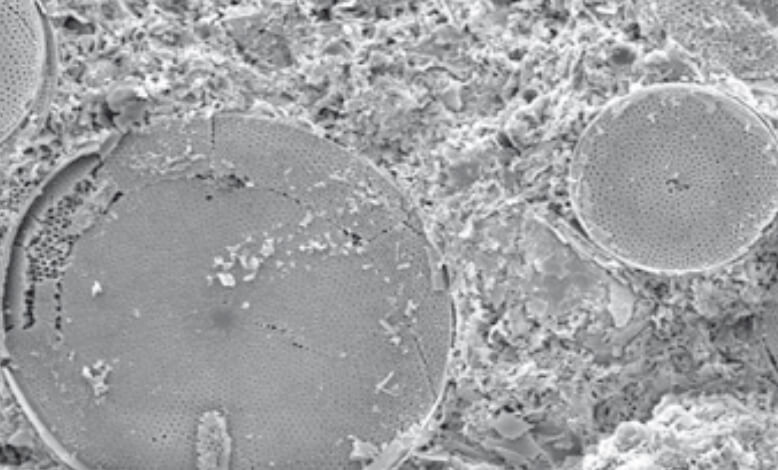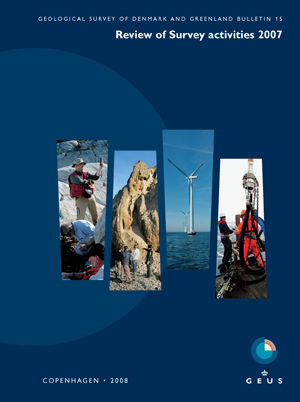
How to Cite
Share
Abstract
The Danish term ‘moler’ is the name for a special and unique marine deposit of Lower Eocene age found in the northern part of Denmark and the Danish North Sea. In the literature it is often referred to as mo-clay, the English translation of ‘moler’ – a whitish, powdery sediment that lithologically is a clayey diatomite. The deposit, which is defined as the Fur Formation, is also well known for its 180 volcanic ash beds, increasing in number towards the top of the formation (Pedersen & Surlyk 1983). Due to Pleistocene glaciotectonic deformations the diatomite deposits crop out at the surface in the Limfjorden area (Gry 1940; Klint & Pedersen 1995; Pedersen 1996, 2000). Prior to the deformations the Fur Formation was situated at about 50–100 m below sea level, but during the deformations the diatomite was displaced upwards into glaciotectonic complexes. The complexes form elongate parallel hills up to 80 m a.s.l. in the western Lim fjord region (Fig. 1). The clayey diatomite attracts attention because it is a valuable raw material for production of insulation bricks and absorbing granulates, which are mainly used as cat litter. In addition, the exposed Fur Formation is a unique reference for investigations of the Palaeogene stratigraphy in the North Sea, where mudstones and shales with ash layers are known as the Sele and Balder Formations (Schiøler et al. 2007). In a tectonic framework the ash layers provide a unique addition to the understanding of the development of the North Atlantic igneous province at the time when Greenland and Norway began to drift away from each other (Larsen et al. 2003). Moreover, the Fur Formation is especially noted for its rich fossil fauna, which comprises remarkably well-preserved specimens of birds, fish and insects. Due to the public interest two museum exhibitions have been established, on Mors and Fur, and the geological features are so evident that numerous geological field trips have benefited from the success of well-displayed geology seen in exposures along the coastal cliffs and in the mo-clay pits. At present a Norwegian drilling company is planning to use the Fur Formation outcrops at Skarrehage for testing before applying their new drilling method offshore. In 2007, GEUS has continued many years of mo-clay investigations, and this paper presents some results from the 2007 activities, in addition to a review on the geology of the mo-clay.
How to Cite
Share
Copyright (c) 2008 Stig A Schack Pedersen

This work is licensed under a Creative Commons Attribution 4.0 International License.
Downloads
Edited by Ole Bennike and A.K. Higgins
This Review of Survey activities presents a selection of 22 papers reflecting the wide spectrum of activities of the Geological Survey of Denmark and Greenland, from the microscopic to the plate-tectonic level.
The Survey's activities in Denmark are illustrated by 13 articles. Five of them deal with petroleum-related [...]









